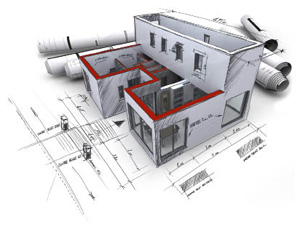Intensified focus on energy conservation and stringent energy-saving regulations in many countries have contributed to the growth of External Thermal Insulation Composite Systems (ETICS) as a façade technology
Intensified focus on energy conservation and stringent energy-saving regulations in many countries have contributed to the growth of External Thermal Insulation Composite Systems (ETICS) as a façade technology. Jerome Sanchez finds out how it could extend the lifecycle of new and existing buildings and, consequently, help in conserving resources.
 Many new and existing buildings the world over are being installed with External Thermal Insulation Composite Systems (ETICS), also known as Exterior Insulation and Finish Systems (EIFS). The system has been proven to reduce air infiltration, stabilise the interior environment and, ultimately, reduce energy consumption by insulating the external part of a structure. In this day and age, when 80% of all energy used is from fossil fuels, energy efficiency in buildings is considered to be the quickest, most effective and environmentally friendly way to reduce energy demand.
Many new and existing buildings the world over are being installed with External Thermal Insulation Composite Systems (ETICS), also known as Exterior Insulation and Finish Systems (EIFS). The system has been proven to reduce air infiltration, stabilise the interior environment and, ultimately, reduce energy consumption by insulating the external part of a structure. In this day and age, when 80% of all energy used is from fossil fuels, energy efficiency in buildings is considered to be the quickest, most effective and environmentally friendly way to reduce energy demand.
In the context of the UAE, escalating demand for energy is attributed to extreme temperatures during the summer months and the consequent prolonged use of air conditioning systems. Other reasons highlighted are disregard for cost-effective practices while installing or setting up equipment, presence of thermal bridges and the low awareness and modern demand habits of consumers.
Andreas Kiesewetter, Head, Building Envelope Systems, DAW, International Business Unit, Caparol, emphasises that the GCC countries are among the highest-ranked electricity users in the world. “Seventy to 80% of electricity generated in the GCC is used in buildings, and 60% to 70% of that is used for climate control,” he says, and points out that in any given structure, the main areas of energy loss are the roof, walls and windows, and believes that improving walls and roofs can save up to 30% of energy.
With the installation of ETICS in new and existing buildings, Kiesewetter says that the thermal efficiency of buildings could be improved by a factor of 10 or more. This, he thinks, would result in a reduction of both the capital cost and the running cost for any building.
Brown Joseph, Technical Development Manager, Dow Construction Materials, says that the four “pillars” of success in the installation of ETICS are good design consideration, selection of quality products, correctness of application and a system concept with fully compatible elements. He enumerates the different components of ETICS:
“Mortar layers are an essential part of ETICS, and their durability and resistance to a number of factors are key for the longevity of the whole system,” points out Joseph. He adds that the adhesive mortar must provide high tensile bond strength for a reliable adhesion of the insulation board to the wall substrate.
ETAG 004, (Guideline for European Technical Approval of External Thermal Insulation Composite Systems with Rendering) defines the bond strength of the adhesive mortar and the substrate to be at least equal to 0.25 N/mm2 in dry condition and 0.08 N/mm2 at two hours and 0.25 N/mm2 at seven days after effect of water.
“The finishing layers have to withstand typical influences resulting from long-term outdoor exposure, such as rainwater, temperature fluctuations and other environmental effects, like air pollution,” explains Joseph, adding that they should also protect the subsequent layers from mechanical impact.
He believes that the base coat should have a strong bond with the insulation and a low water pick-up. He also says that it should have resistance to hard body impact, and that the insulation board should have resistance to vapour and should be retardant to fire.
The fibreglass mesh, Joseph points out, should possess alkali resistance and tensile properties, while the top coat paint should have exterior durability, dirt pick-up resistance and resistance to water vapour diffusion.
Conclusion
The heightened focus on energy saving measures and environmental protection has served as an impetus for the construction and chemical industries to develop technologies and products that contribute to a significant increase in energy efficiency in buildings. As private and commercial buildings are often regarded as the biggest sources of energy wastage, insulating these facilities may result in a dramatic decrease in overall energy consumption. ETICS, a technology developed in Europe in the early 1970s, are applied to various buildings worldwide, not only to save on energy costs for heating and cooling, but also to provide a safer, healthier and more comfortable living environment.
Copyright © 2006-2025 - CPI Industry. All rights reserved.